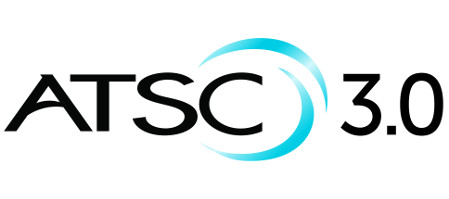ATSC 3.0: Retrans Parleyed, Scope of Detail Debated

WASHINGTON—Retransmission consent is emerging as a particular bugaboo in the Federal Communications Commission’s ATSC 3.0 proceeding. The commission’s Notice of Proposed Rulemaking to allow voluntary deployment of the advanced TV transmission standard would keep must-carry in place for signals in the current ATSC 1.0 format, but leave carriage of 3.0 signals up for retrans negotiation.
In a nutshell, “no way,” say pay TV operators, claiming they are already strong-armed into carrying unwanted signals.
“Way,” say broadcasters. “It’s free market. If you don’t like it, pick up your marbles and go home.
Size matters in the retrans debate. Small pay TV operators are outgunned by the larger programming providers, both cable- and broadcast-based. Small broadcast shops, on the other hand—those with just two or three stations in small to medium markets, have nowhere near the negotiating firepower of a Comcast with operations covering a third of the U.S. population.
Even Sinclair, which has 173 TV stations and deals for 60 more, says it’s dwarfed by the large carriers.
“The four largest MVPDs together account for more than four out of five MVPD households. The smallest of these is more than five times as large as Sinclair, measured by both market capitalization and revenue,” Sinclair said in reply comments, which were due on the docket Thursday.
SINCLAIR vs. ATVA
Sinclair focused on comments by the American Television Alliance, a lobby formed by a number of pay providers to battle retrans. Members range from the American Cable Association representing 850 small and mid-sized operations serving a 7 million households, to Charter Communications, the second largest U.S. cabler with nearly 25 million subscribers.
The ATVA said it supported the notion of “permissionless innovation” for broadcasters, but objected to the application of retrans to 3.0, using Tennis Channel as an example.
“Sinclair did not obtain expanded Tennis Channel coverage from ATVA members by offering something of value in exchange. Rather, ATVA members report that Sinclair presented carriage of the Tennis Channel as a fait accompli at the start of retransmission consent negotiations. …We have every reason to believe that broadcasters would negotiate for carriage of their ATSC 3.0 signals in exactly the manner that Sinclair negotiates for carriage of the Tennis Channel.”
To which Sinclair replied that the ATVA “bizarrely alleges that Sinclair has coerced various MVPDs to carry the Tennis Channel against their will and without ‘offering something of value in exchange.’ …We doubt any of the management of the MVPDs backing ATVA would report to their shareholders—or state in their public filings—that they had entered into a significant commercial agreement without getting anything of value in exchange.”
The ATVA further asked the commission to prohibit broadcaster degradation of the ATSC 1.0 signals now carried by its members. Sinclair said it’s the pay carriers, not the broadcasters, who “consistently demand rights to further compress it.”
ATVA said 3.0 would impose inordinate costs on multichannel video programming distributors, including potential royalty fees for HEVC, the standard’s video codec. Sinclair said ATVA’s cost estimates were overstated. ATVA also urged the FCC to “adjust” the 5 percent ancillary fee on revenue-generating secondary broadcast services. Sinclair said, sure, go ahead: “The commission should take this opportunity to reduce this requirement substantially and ensure that it truly does not dissuade innovation.”
LG: A/322 IS ‘CRITICAL TO NEXT-GEN TV’
The commission’s ATSC 3.0 proposal would codify just one of 20-plus individual standards that comprise the 3.0 suite. That would be A/321, the “bootstrap,” which provides a doorway for the TV signal to get into the RF waveform. (The rest of the 3.0 standard offers a variety of technologies designed to allow individual broadcasters to tailor their service types. Watch “25 More Things to Know About ATSC 3.0,” a TV Technology webinar presented June 6, for more.)
The NPRM also asked if A/322, the “Physical Layer Protocol,” which configures the various bitrate conduits within a 6 MHz channel, should be ratified. Yes, says LG Electronics. “A/322 is necessary to ensure a stable RF environment.”
On this point, Sinclair’s ONE Media split the sheet: “Doing so would limit the usefulness of the transmission standard and hamper broadcasters’ ability to exploit the standard’s potential fully without adding anything not already protected by the rules currently in force.”
“Manifestly untrue,” LG replied. “The waveform and coding choices available with A/322 result in more than 10,000 different emission parameters…. A/322 is the component of ATSC 3.0 that ensures that receivers in televisions and other consumer reception devices are able to demodulate an ATSC 3.0 signal.”
Seattle-based engineering consultant Benjamin Dawson also favors the inclusion of A/322, “since A/321, by itself, is insufficient to define the waveform and interference criteria.”
ATSC: 3.0 IS LOCKED AND LOADED
The Advanced Television Systems Committee, the organization that developed the 3.0 standard, also filed a reply comment on the docket to the effect that both A/321 and A/322 are ready to roll.
“These standards are finalized, along with a majority of the other standards and recommended practices that make up ATSC 3.0. Therefore, there is no reason to delay its adoption.”
ATSC also noted that it requires disclosure of any patented technology within the standard to be made available on “reasonable and non-discriminatory terms.”
AT&T STANDS WITH MVPDs
AT&T also weighed in on the docket in the MVPD camp.
“The commission should heed the unified voice of MVPDs in this proceeding and adopt rules that ensure that the ATSC 3.0 transition will be voluntary for all stakeholders, not just broadcasters.”
AT&T also urged the commission to be adamant about requiring 1.0 simulcasting as a condition for transmitting 3.0. (See “ATSC 3.0 Local Simulcasting Approach Debated,” May 9, 2017.) ONE Media requested “flexibility for simulcasting” and the use of vacant channels for launching 3.0 or transmitting 1.0. Low-power broadcasters outright oppose simulcasting because of the cost involved.
The LPTV Spectrum Rights Coalition said, “The new regulatory burden of a local simulcast, would literally make it financially infeasible for a large majority of stations to convert in a timely manner…. Our Coalition recommends that Class-A and LPTV stations be allowed to ‘flash-cut’ to a 3.0 service without any legacy ATSC 1.0 legacy simulcast.”
Likewise, Keith Leitch, president of One Ministries, Inc., a Class A and LPTV station owner in Santa Rosa, Calif., said, “Allowing us to freely move to ATSC 3.0 whenever we like will help ensure our survival.”
ATSC 3.0 WEEK AT THE FCC
The commission set aside time later this month specifically to discuss the ATSC 3.0 comments and replies with the various players “given the interest in this proceeding,” the Media Bureau’s Public Notice stated. Tuesday, June 27 through Friday, June 30, between 9 a.m. and 5 p.m. has been blocked out for 3.0 meetings between “interested parties” and commission staff.
RANDOM SELECTION OF OTHER COMMENTS
“I do not think it a good idea for the government to authorize official use of airwave spectrum for this purpose,” wrote Prof. John Woods of the Department of ECSE Rensselaer Polytechnic Institute. Woods recommended “staying with ATSC 1.0 in the authorized spectral bands and fully expect its use to die off in the coming five to 10 years,” because “there is a new TV emerging, one that will be delivered by the wired Internet and wireless cellular networks.”
Lokita Solutions of Radnor, Pa. a 3.0 app developer, countered that “one-to-many broadband Internet over-the-air will revolutionize the wireless broadband marketplace for the age of the Internet of Things.”
“The FCC should confirm that voluntary adoption of ATSC 3.0 will be the FCC’s permanent policy. — ION Media
“Commissioner O’Rielly’s goal of having the initial rules to authorize voluntary use of the “Next Generation” broadcast standard, with no unnecessary mandates, in place by October is the correct one. Rapid approval of this NPRM promises to again revolutionize broadband media as we know it.” — Chet Dagit, founder and CEO of Lokita Solutions, a Radnor, Pa., app maker.
The commission should not permit broadcasters to use vacant channels preserved for unlicensed operations or require TVWS devices to protect multiple ATSC 3.0 transmissions.” — the Wi-Fi Alliance (Dell, Intel, Microsoft, Qualcomm, LG, T-Mobile, Samsung, Nokia, etc.)
“The commission should expressly prohibit the tying of ATSC 3.0 carriage to retransmission consent negotiations. The commission should also require local broadcast stations to disclose their plans to transition to ATSC 3.0 and local simulcasting during retransmission consent negotiations that are scheduled to take place at the end of 2017.” — WTA-Advocates for Rural Broadband
“MVPDs should continue to enjoy the full benefits of the retransmission consent agreements for which they bargained, but should not be effectively coerced into carrying ATSC 3.0 signals when negotiating new retransmission consent agreements or the renewal of existing ones.” — The Independent Telephone & Telecommunications Alliance
“Meredith encourages the FCC to adopt ATSC 3.0 as a new, optional additive standard, while allowing simulcasting for a voluntary transition and implementing necessary clean-up rule changes to be clear ATSC 3.0 counts as ‘television broadcasting’ under the FCC's rules.” — Meredith Corp.
“NPR urges the commission to ensure the interference protection of NCE radio stations operating on the reserved portion of the FM band as a result of the DTV transition to the ATSC 3.0 standard.”— NPR
“Although LG agrees that the Physical Layer [A/321] is the only layer of ATSC 3.0 that is relevant for purposes of authorizing broadcasters to provide Next Gen TV service, LG urges the commission to also incorporate by reference into its rules A/322, which is the critical component of the Physical Layer for interference-free delivery of IP signals to both fixed receivers and mobile devices, including new automotive applications.” — LG Electronics
“AWARN will enable distribution of geo-targeted, rich media alerts simultaneously to an unlimited number of enabled fixed, mobile, and hand-held devices, indoors and outdoors, across an entire television broadcast contour…. AWARN capabilities will far exceed those available to the American public today.” — AWARN Alliance
The professional video industry's #1 source for news, trends and product and tech information. Sign up below.
